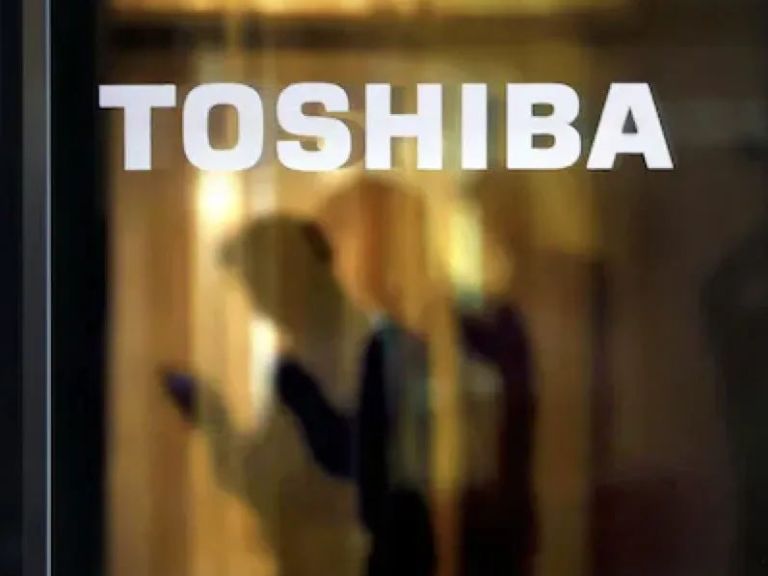Toshiba and the Parable of Flash
Toshiba Corp.’s plan to spin off its chip business has put its flagship NAND flash memory products in the spotlight. Toshiba engineers invented flash memory in the 1980s, setting off a revolution that ultimately transformed many facets of consumer and industrial electronics. But Toshiba management, initially failing to foresee the bounty that awaited flash developers, came close to letting the big one get away.
By 1980, the need for a more economical data-storage alternative to E2PROM had become apparent to Fujio Masuoka, a factory manager at Toshiba. E2PROM incorporated two transistors per cell and had to be completely erased before being rewritten. So Masuoka assembled a team of four engineers to develop a smaller and more affordable memory chip architecture that could store a lot of data but would speed erase and write times.
Masuoka’s team came up with a design that replaced the E2PROM two-transistor cell structure with a single-transistor cell and allowed data to be read and written in blocks or pages. The design eventually led to the creation of much smaller memory chips. And Masuoka based his work on the premise that the cost of new memory chips would continue to drop as transistors shrank in size.
To help pitch their concept, Masuoka and his team worked to come up with a catchy name that would highlight the new memory technology’s ultrafast erasing capability. Team member Shōji Ariizumi suggested “flash,” evoking the speed of a camera flash.
What happened next is a story all too familiar in the tech world. Masuoka’s bosses at Toshiba didn’t like the idea and asked him to “erase” it. Nonetheless, Masuoka and his team presented their work at the 1984 IEEE International Electron Devices Meeting (IEDM) in San Francisco.
The making of NOR and NAND flash
Intel Corp., intrigued by Masuoka’s ideas for a new memory architecture, undertook its own work and launched the first NOR flash chip in 1988. The NOR flash chip allowed a single machine word or byte to be written or read independently.That lengthened the erase and write time over Toshiba’s early design but provided full address and data buses, thus allowing random access to any memory location. That, in turn, made NOR flash a suitable alternative to ROM chips for storing program code in devices like the set-top box.
That’s when Toshiba went back to the drawing board. A year after Intel launched its NOR flash, the Japanese tech giant came up with a version of its NAND flash chip design that reduced the erase and write times and mandated less area per cell.
Consequently, Toshiba’s NAND flash chips were able to offer greater storage density and lower cost per bit. And the mass data storage capability made NAND flash the memory technology of choice in devices such as solid-state drives (SSDs), memory cards, and music players.
在线留言询价
- 一周热料
- 紧缺物料秒杀
| 型号 | 品牌 | 询价 |
|---|---|---|
| RB751G-40T2R | ROHM Semiconductor | |
| BD71847AMWV-E2 | ROHM Semiconductor | |
| TL431ACLPR | Texas Instruments | |
| MC33074DR2G | onsemi | |
| CDZVT2R20B | ROHM Semiconductor |
| 型号 | 品牌 | 抢购 |
|---|---|---|
| BU33JA2MNVX-CTL | ROHM Semiconductor | |
| BP3621 | ROHM Semiconductor | |
| ESR03EZPJ151 | ROHM Semiconductor | |
| STM32F429IGT6 | STMicroelectronics | |
| IPZ40N04S5L4R8ATMA1 | Infineon Technologies | |
| TPS63050YFFR | Texas Instruments |
AMEYA360公众号二维码
识别二维码,即可关注



























